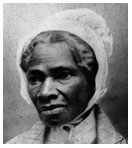This guest post by David Bowles dives into the origin and usage of the terms Hispanic, Latinx, Latine, and others. It was originally posted to Medium in December 2018. David is the author of numerous books for young readers, including The Witch Owl Parliament (Clockwork Curandera #1).
Continue readingTag Archives: Language
Watch Now: Foster Multilingual Learners Through Story: In Conversation with Lee & Low Authors
Thank you to all who joined the “Foster Multilingual Learners Through Story: In Conversation with Lee & Low Authors” panel on November 8, 2022. The NYC Department of Education hosted this panel as part of their Beyond Access Forum.
Click here to register and watch on demand! It’s FREE and open to everyone.

In this webinar, the panelists discussed how high-quality bilingual and dual language picture books celebrate the voices and cultures of young readers’ lived experiences and affirm and validate a child’s identity. Hear from Ying-Hwa Hu (Ten Blocks to the Big Wok); Claudia Guadalupe Martínez (Still Dreaming / Seguimos soñando); and Xelena González (Where Wonder Grows and Donde las maravillas crecen) as they discuss their books, their role as storytellers, and their hope for the future of bilingual and dual language children’s literature.
Purchase the books from the webinar here:
Ten Blocks to the Big Wok
Still Dreaming / Seguimos soñando
Where Wonder Grows and Donde las maravillas crecen
Additional recommended resources:
Recursos en español para educadores y familias
Authentic Spanish Books List
10 Reasons To Celebrate Bilingual Books
Dual Language Learners Deserve Research-Backed Resources
Unpacking the Common Core Standards, Part 3: Thinking Horizontally
 Jaclyn DeForge, our Resident Literacy Expert, began her career teaching first and second grade in the South Bronx, and went on to become a literacy coach and earn her Masters of Science in Teaching. In her column she offers teaching and literacy tips for educators.
Jaclyn DeForge, our Resident Literacy Expert, began her career teaching first and second grade in the South Bronx, and went on to become a literacy coach and earn her Masters of Science in Teaching. In her column she offers teaching and literacy tips for educators.
Over the past few weeks, I’ve been talking talked the importance of looking at the standards horizontally as well as vertically, and in today’s post, I’m going to do just that as I walk you through what effective close reading questioning can look like, unpacking one strand at a time using texts of varying complexities. On the docket for today:
Reading Standards for Literature K-3, Craft and Structure, Strand 4
In Kindergarten, the strand reads: Ask and answer questions about unknown words in a text.
Example text: Pencil Talk and Other School Poems by Anastasia Suen & illustrated by Susie Lee Jin
genre: poetry
Strand-specific questions:
- Look at the poem “Pencil Talk.” Which words were tricky for you to sound out? Did you come across any words where you weren’t sure what they meant?***What does the word scratch mean? Bonus: What does the poet mean when she writes “Pencils can talk…but we can’t!“
Seven Inspirational Speeches and Why They Matter
I was watching President Barack Obama’s re-election speech last week and it got me  thinking about speeches—how historically great speeches really matter. Speeches are like placeholders to mark significant milestones in history. I think the main idea that moved me about the president’s speech was that the message of unity—even after the most grueling, partisan, expensive election campaign ever—is reminiscent of Dr. Martin Luther King Jr.’s I Have a Dream speech. The sentiments Dr. King expressed fifty years ago are still being realized today. A truly united United States of America is very much a work in progress.
thinking about speeches—how historically great speeches really matter. Speeches are like placeholders to mark significant milestones in history. I think the main idea that moved me about the president’s speech was that the message of unity—even after the most grueling, partisan, expensive election campaign ever—is reminiscent of Dr. Martin Luther King Jr.’s I Have a Dream speech. The sentiments Dr. King expressed fifty years ago are still being realized today. A truly united United States of America is very much a work in progress.
Here are some favorite speeches of mine:
Sojourner Truth: Ain’t I a Woman?, 1851
“That man over there says that women need to be helped into carriages, and lifted over ditches, and to have the best place everywhere. Nobody ever helps me into carriages, or over mud-puddles, or gives me any best place! And ain’t I a woman? Look at me! Look at my arm! I have ploughed and planted, and gathered into barns, and no man could head me! And ain’t I a woman?” Read more
What does close reading look like in Second Grade?
![]() Jaclyn DeForge, our Resident Literacy Expert, began her career teaching first and second grade in the South Bronx, and went on to become a literacy coach and earn her Masters of Science in Teaching. In her column she offers teaching and literacy tips for educators.
Jaclyn DeForge, our Resident Literacy Expert, began her career teaching first and second grade in the South Bronx, and went on to become a literacy coach and earn her Masters of Science in Teaching. In her column she offers teaching and literacy tips for educators.
Before I start discussing close reading in the second grade classroom, I want to take a minute to acknowledge educators and students across the Northeast, who over the past two weeks have dealt with not just superstorm Sandy, but a Nor’easter! Some schools sustained significant flooding and damage, or have classrooms without heat or power. And in some areas, even though the children are back in the classrooms, after a long day teachers and students head home to clean and repair damage sustained to their own homes and communities. And last week, they did that in the wind and snow. If that’s not dedication, I don’t know what is. My thoughts are with everyone who continues to be affected by this awful streak of weather.
Now, back to our regularly scheduled programming. Over the next several weeks, I’ll be modeling how to do a close reading at several different grade levels. Last week, I wrote about close reading in first grade. Next up: Close Reading in Second Grade using the L level text Under the Lemon Moon by Edith Hope Fine and illustrated by Rene King Moreno.
In terms of student questioning, start general and move up Bloom’s Taxonomy by gradually increasing the rigor. For example, say you want to focus your close reading of Under the Lemon Moon on author’s craft, specifically focusing on language and word choice in just the first six pages of the story (2nd grade reading standard for literature, Craft and Structure, strand 4, AND 2nd grade language standards, Vocabulary Acquisition and Use, strands 4-6 from the Common Core Standards). Here are the questions I would ask:
This Week in Diversity: Arizona, the Supreme Court, and Crayons
Before we launch into this week’s roundup of race and diversity links, I’d like to make a plea: help your local library. Many around the country are facing massive budget cuts, so let your elected officials know that your library is important. New Yorkers, NYPL has a handy form to help you contact your City Council member and the mayor, in the hopes of preventing massive service cuts, including closing ten branches and limiting the library to four open days per week.
Now, to diversity!
White people adopting children of color is discussed relatively often, but Charles Mudede looks at the other side: what it says when a black person adopts a white child.
Amazon to accept Spanish, Portuguese, and Italian books to their online store
In response to a growing interest in foreign language books from parents and kids alike, Amazon.com announced an update to their digital reader—the Kindle—that would allow three new languages into their growing digital library. In a February 19th announcement, Amazon unveiled an update to the Kindle text platform, allowing Spanish, Portuguese and Italian authors to upload and sell digital versions of their books over the internet.
This Week in Diversity: A Miscellany
Friday afternoon: time to read up on diversity around the web! This week we have a rather miscellaneous batch of links for you, so dig in.
Ah, Hollywood, will you never stop provoking discussion on race in casting? Not this week, certainly. Racialicious looks at the Screen Actor’s Guild’s annual diversity research and explains why the state of minorities in major acting roles is worse than the numbers suggest.
Is the term Indian Summer racist?
It’s been an odd summer, weather-wise: roasting in April, cool in June and July, and just a few blazing weeks in August before the current chill September. So yesterday I mused, are we going to get an Indian summer?
And then I stopped thinking about the weather itself and started thinking about the term “Indian summer.” I had no idea where the term came from. The surface meaning—an unusually warm period between the leaves changing and the first snow—is harmless, but I had a sneaking suspicion that the origin of the term was racist.
Wikipedia gives three theories of the term’s etymology:


